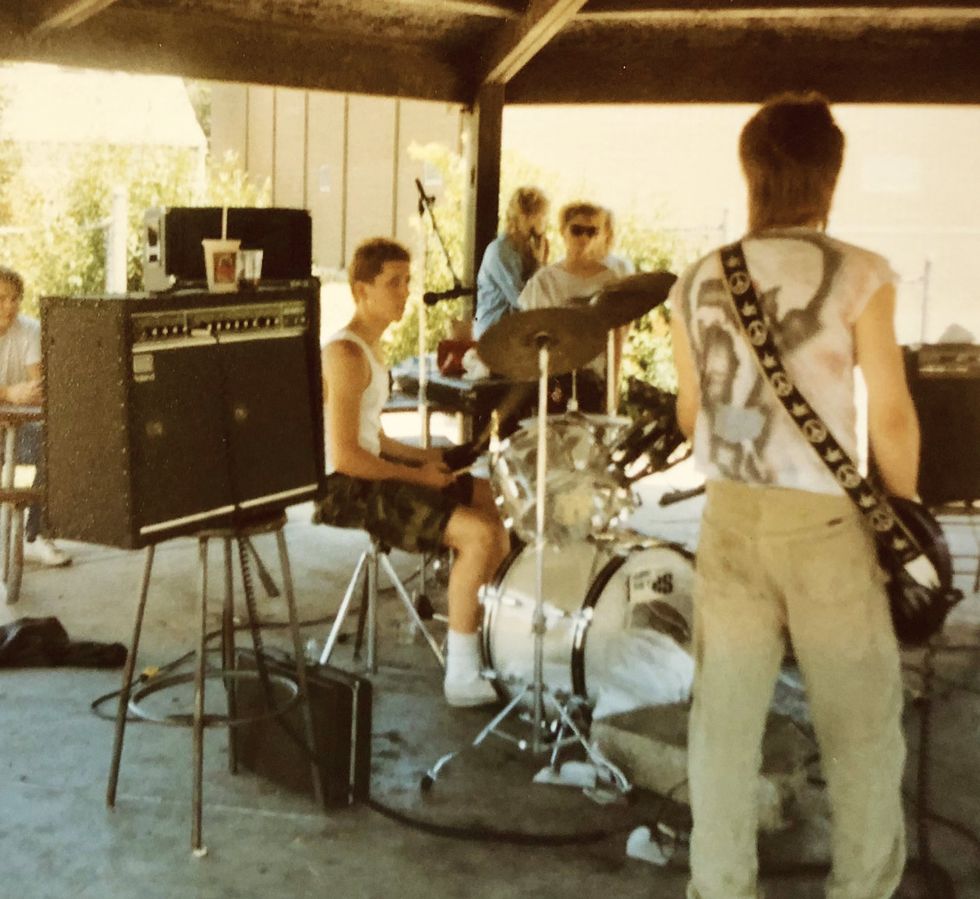Hi. I’m Steve Carr of boutique guitar amp company Carr Amplifiers. Premier Guitar has been kind enough to ask me to write a little something for you each month about guitar amps. My hope is to entertain with tube insights plus a few illustrative near-topic stories. As a student, I avoided English classes as a rule, desperately substituting any math or science class. My hat’s off to the (for now) willing PG editorial staff!
And now, two early electronics lessons.
Around age 10, back in 1973, I lived in northern Indiana. Once a week, given a good reception night, I would tune in to the Dr. Demento Show broadcast from Chicago. The channel faded in and out on my small 9V AM/FM portable radio. It was a funny show and I really wanted to listen, but my weak long-distance reception made it a struggle. Hey, if the radio is just barely receiving at 9V… imagine the reception at 120V! A donor lamp cord later, and I held a live AC mains wire below the 9V battery socket on my radio. If you’re wondering where my parents were, all I can say is, man, it was the ’70s…. I lowered the socket to the wires and my radio burst into flames! No music, no Dr. Demento, no more radio. I don’t recall getting in trouble, so I must’ve put out the fire and my parents were none the wiser.
Ten years later, in 1983, I was a sophomore at Purdue University and in a band. My amp was a late-’60s blackface Fender Bandmaster I bought from a guy for $40 in high school. This fellow was a smoking guitar player whose day job as a city garbage collector had certain perks. He found the Bandmaster in someone’s trash, so the bargain $40 price seems a little fairer than you might think!
In the late ’70s, when I was just starting to play, the guitars and amps we consider vintage today were just last year’s models. Most people wanted the new stuff if they could afford it. During band practice one night, my Bandmaster started buzzing loudly. It still produced sound, but with a terrible buzz. I didn’t know what to do and did not really understand amps could be fixed, so I decided to buy a new one.
Luckily, I had some money saved from my busboy job at the Lafayette Howard Johnson’s Cock and Bull Lounge. Hard to believe I lost track of the black polyester uniform vest with a gold embroidered Cock and Bull logo. It might not fit anymore, but style is timeless. Anyway, as a young guitarist I wanted the amp my favorite guitar player at the time used: Adrian Belew of King Crimson played a solid-state Roland JC-120. Wow! I would be great with that amp! The JC-120 cost $500—worth it for a dream amp.
After my exciting JC-120 arrived, I used it for weeks and just could not warm up to it. It was not my style. It was very stiff and cold with no overdrive or touch-sensitive vibe. Belew sounded great, but I did not. This was a real eye-opener, and ever since I’ve been careful with my gear choices. Try before you buy, if possible, and be truly honest with what you like. Let that be your guide, along with the ideas you glean from your guitar hero’s gear.
So, after many weeks trying to love the JC-120, I opened up the Bandmaster and there—without any understanding of circuits or electronics—I saw a wire sticking up from a solder point on the chassis. You could see where it had been attached and vibrated free. After twisting the wire around another similar point—no solder skills, yet—I plugged the Bandmaster in and it worked fine! From that point forward my bandmates referred to the JC-120 as the “$500 mistake.” This experience started my love and fascination with tube amps.
It takes confidence to follow our own paths while recognizing the gear influences of our favorite guitarists. During my amp prototyping process, I try hundreds of permutations hoping to get features to work together correctly and achieve tones I want. Many times, I’ll think of a circuit or variation that, on paper, is very clever and exciting—only to find it does not work or, worse, it sounds bad. Here’s my point: The process is the import thing. You work through the sonic blind alleys, but if you don’t try them all, you may miss something good.
So, finally, where did the “$500 mistake” end up? I sold it to a drummer. (Insert your own joke here.)
Next time, bright caps.








![Rig Rundown: Russian Circles’ Mike Sullivan [2025]](https://www.premierguitar.com/media-library/youtube.jpg?id=62303631&width=1245&height=700&quality=70&coordinates=0%2C0%2C0%2C0)

















